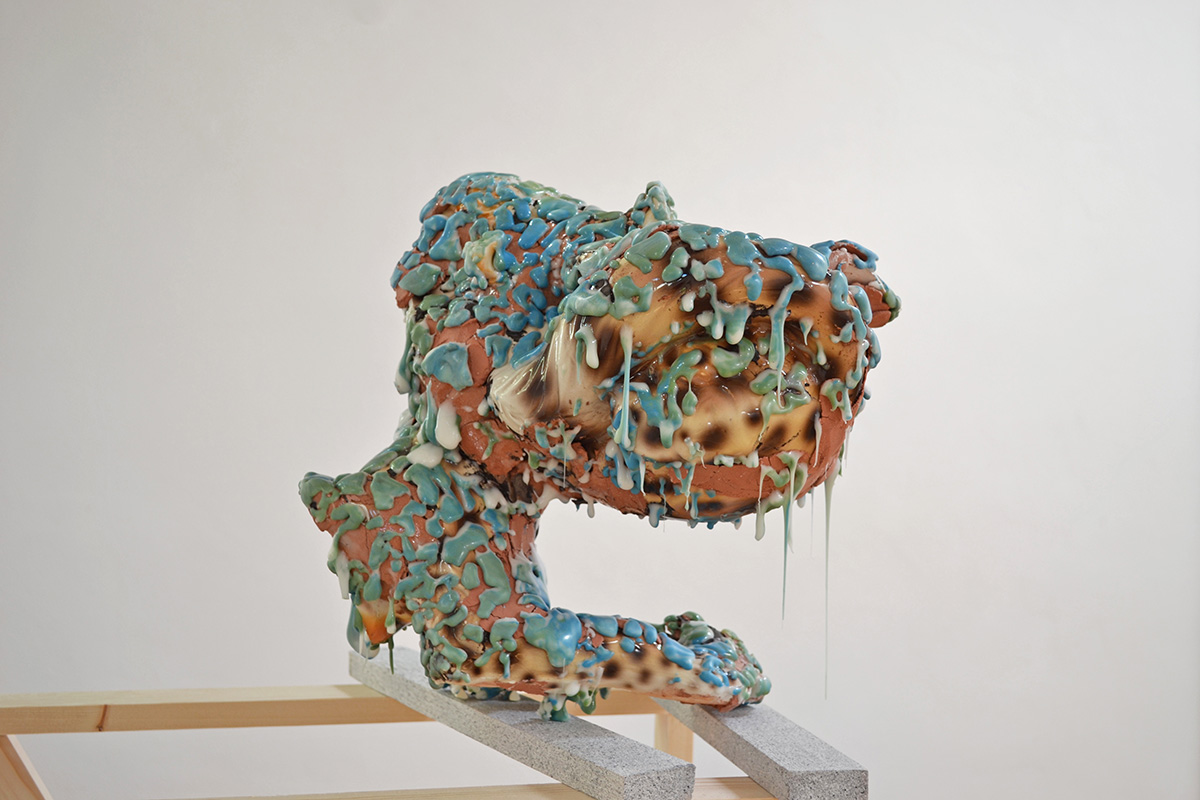Lost and found
![]()
exhibition view
(with work by Johanna Strobel and Lilian Robl)
![]()
![]()
exhibition view
(with work by Justin Lieberman and Pat Shoulder)
![]()
![]()
ceramic, second-hand leopard figure, wire, glaze; 32 x 28 x 33 cm
lost and found, 2021
group exhibition with Lilian Robl, Johanna Strobel, Justin Lieberman, Pat Shoulder
at GIG-MUNICH
curated by Magdalena Wisniowska
A
naturalist, specifically an 18th century one, likes to classify. After
an expedition to the jungles of some remote land he – and it is almost
always a he – takes out his specimens and begins to compare. This one
looks like the second, the third does not, the fourth has some features
of the first two, but also some traits seen in the third. He makes up
categories and puts labels on boxes, marking the time and place at which
the specimens were found. He then takes out a scalpel and cuts them
open in order to examine their inner structure. Here are the muscles and
these are the breathing organs. This is the skin, and under the
microscope he can see the epidermal structure. Visually speaking, the
naturalist proceeds mimetically, by finding patterns and organising resemblances. He looks and compares. He judges accordingly.
There
are however animals that escape the naturalist’s grasp. Fictional
beings like vampires and werewolves, who live in darkness of our
imaginations and spread by infecting others with their poisonous bite –
these can be easily dismissed as unworthy of our serious attention.
Viruses and pandemics less so. A virus can hardly be deemed alive,
reproducing only in the host’s body. Although it mutates, it does not
develop to evolve into ever more complex organisms. While it can be
placed into groups of similar viruses, it eludes the classificatory
system with its orders, families, genera and species.
The
exhibition ‘Lost and Found’ has a slightly dystopian, even
post-apocalyptic quality, of various objects assembled in haste and then
disregarded, leftovers from a Mad-Max film set. A preview exhibition,
it consists of artists who will hopefully be part of GiG Munich’s
‘Thinking Nature’ 2022 programme, which examines the relationship
between man and nature, as it presents itself in thought. These artists
were selected because their practices are not of class and order, but
rather
of mutation and infection. We see this most in Julia Klemm’s
sculpture were kitsch ceramic animals are broken up and then
reassembled, set precariously on their rickety plinths. Pat Shoulder’s
work is collaborative, a result of an exchange of letters between the
two artists during the first lockdown. The order of time is put into
question with Johanna Strobel’s installations and logic disintegrates
in Lilian Robl’s videos. There is a celebration of nature’s structures
in the glass turtle shells of Justin Lieberman but again this order is
not that of the naturalist. As with the others, it is a viral order of
an unnatural kind.
Magdalena Wisniowska




